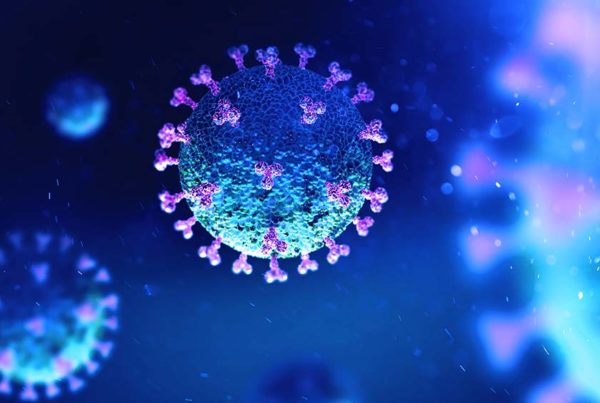
Head trauma and serious brain injuries are well-known problems in football, boxing and other contact sports, but these injuries also occur in endurance athletes, non-competitive exercisers and those performing physical work.
We often hear about head injuries and concussions as they relate to professional football, and the current focus on concussion protocols and Chronic Traumatic Encephalopathy, or CTE, in the NFL However, mild forms of traumatic brain injury account for the majority of head injuries worldwide, including those among endurance athletes.
These seemingly benign bumps to the head are often neglected by individuals, health practitioners, and sports personnel. Of course, any head trauma is serious because it also can injure the brain. In addition to affecting overall physical performance, balance and coordination, it can also negatively affect cognitive function, concentration, memory and other mental processes.
In addition to full-contact sports like football and boxing, head injuries are also common in soccer, basketball, rugby, lacrosse, and other activities where collisions include hits to the head. They commonly occur in endurance sports as well, often from bike crashes (even in those wearing a helmet), falls taken by runners, or getting kicked in the head during the swim start of a triathlon.
Sometimes these problems occur when the head isn’t directly traumatized. Even repeatedly pounding the heels into the ground during running or jumping, or riding a bike on rough roads or trails can cause problems.
The damage can also be due to repeated microtrauma. So even riding around the golf course in a cart with jarring bumps and quick turns, can be a problem too, as can participation in motor sports, or even in professions where workers run heavy equipment.
Even without hitting the head, accelerating-decelerating forces, such as those that occur in a car accident, can be associated with whiplash and produce sufficient brain stress to induce a concussion (even coma). That’s because neck and head muscles are affected too. This relatively minor muscle imbalance can be greatly amplified during the trauma of exercise, especially running, affecting gait and economy, and slowing healing from head-brain injury.
In addition to the risk faced by competitive athletes, the problem also occurs during military activities, gym classes and in those exercising for fitness or performing everyday work activities, and with physical abuse.
Aside from physical trauma, biochemical and mental-emotional stress can cause brain injury, too. Consider the acute brain impairment in endurance athletes due to hyponatremia and water intoxication, severe hypoglycemia and other problems that influence the brain, causing athletes to stagger like a boxer after a hit, or fall to the ground in a race attempting to crawl to the finish line.
While serious injury can cause obvious concussions, more mild head trauma, often brushed aside, can still cause significant impairment that can produce both acute and long-lasting effects. Consider the middle-ager referring to knee pain as “an old football injury,” but that early trauma would most likely have included injuries to the head/brain, contributing to other “injuries” or conditions often mistakenly thought of as a normal part of aging — such as depression, headaches, brain fog and cognitive decline. In some cases, head trauma has the potential to induce neurodegenerative disease.
The good news is that, at any age, the brain can heal. But it takes a healthy body, sufficient recovery, and balanced muscles.
The neck connection and whiplash
During trauma, neck muscles protect the head to diminish impact and motion stress, reducing the severity of head-brain trauma, including whiplash. Throughout the process of recovery, healing the brain also relies on muscle balance to maintain proper posture, head movement and gait.
Injuring the delicate neck muscles, especially those hard-wired to the brain including the neck flexors, upper trapezius and those in the jaw. These influence balance, vision, and a wide variety of neurological functions. Even minor head-brain injuries may be maintained when the neck muscles don’t recover. This could cause neck muscle soreness, pain, or just tightness, and sometimes affect the temporomandibular joint (TMJ).
The diminished physical support of the head and neck can increase vulnerability to further head injury, especially microtrauma. It can, in fact, influence the whole physical body. In addition, it can also reduce athletic performance such as producing an irregular gait and reduced running economy.
Recovery from brain trauma
How quickly can the brain heal? That depends on the trauma history, overall health, and the ability to restore muscle balance in the head and neck. Here are two key factors:
- Muscle imbalance. This is evaluated and treated by various types of practitioners from physical therapists, osteopaths and chiropractors to medical doctors, massage therapists and others trained to perform manual muscle testing.
- Chronic inflammation. This is typically a part of brain injury. Food plays a primary role, especially important is eliminating junk food (sugar promotes inflammation) and balancing fats. Specific foods like fish oil, raw sesame and ginger can help too.
More serious brain injury usually is treated by specialists using individualized approaches to address the body’s physical, biochemical and mental-emotional needs.
Adults often unknowingly maintain muscle imbalance, chronic inflammation, and induce microtrauma, or don’t allow themselves to properly recover from exercise or competition. Children are unfortunately exposed to sports that commonly cause head-brain trauma, part of our no-pain no-gain culture.
Preventing head-brain injuries begins by avoiding excess trauma and being both healthy and fit. Whether you already are recovering from head trauma or want to be prepared in the event of a knock to the head, it pays to pay close attention to your health.
Bibliography
Alvarez VS, et al. The Influence of Neck Muscle Tonus and Posture on Brain Tissue Strain in Pedestrian Head Impacts. Stapp Car Crash J. 2014;58:63-101.
Balies JE, et al. Role of subconcussion in repetitive mild traumatic brain injury. A review. J Neurosurgery; 2013. 119(5):1235-1245.
Choi WJ et al. Effect of neck flexor muscle activation on impact velocity of the head during backward falls in young adults. Clin Biomech (Bristol, Avon). 2017;49:28-33.
Jang S et al. Recovery of an injured corticobulbar tract in a patient with stroke. A case report. Medicine (Baltimore). 2017; 96(38): e7636.
Jin X. The Role of Neck Muscle Activities on the Risk of Mild Traumatic Brain Injury in American Football. J Biomech Eng. 2017;139(10).
Montenigro PH, et al. Cumulative head impact exposure predicts later-life depression, apathy, executive dysfunction, and cognitive impairment in former high school and college football players. J Neurotrauma. 2017; 34: 328–40.
Tagge CA et al. Concussion, microvascular injury, and early tauopathy in young athletes after impact head injury and an impact concussion mouse model. Brain. 2018.
Smith DW, et al. Internal jugular vein compression mitigates traumatic axonal injury in rat model by reducing intracranial slosh effect. Neurosurgery. 2012; 70:740–746.








